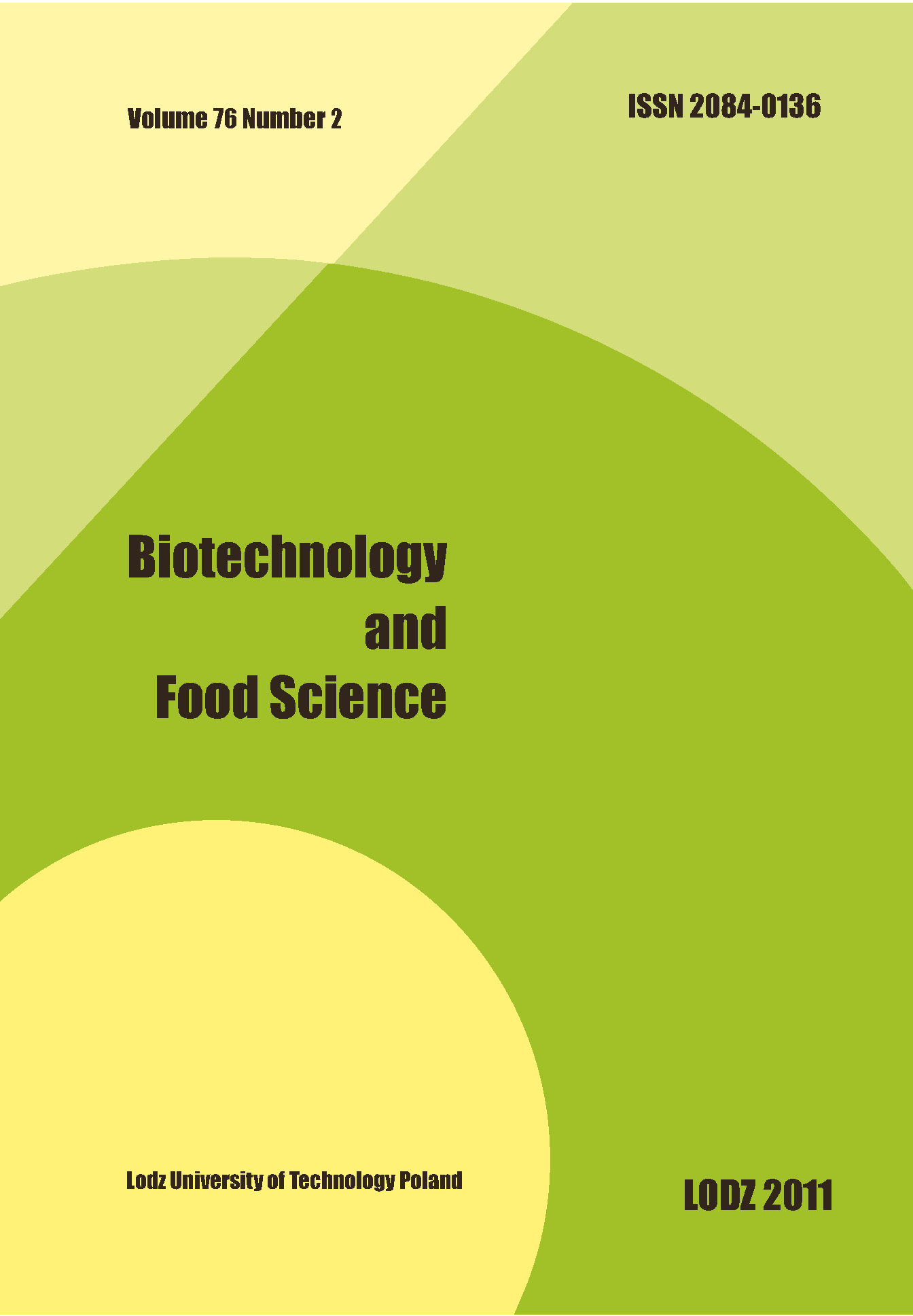Abstrakt
Many allergens, such as hazelnut, peanut, charlock, celery, sesame, lupine, walnut, almond, macadamia nut, hickory, pistachio, wheat gliadins, may be present in food products, however, undeclared or as unintentional additives. Due to the growing number of allergic reactions, it is crucial to have fast, reliable methods of allergen detection in processed food products. This review summarizes the recent methods of allergen detection in food products based on PCR reactions, namely PCR-ELISA, Real-time PCR, PCR-PNA-HPLC, Duplex PCR and Multiplex Real-time PCR, describing their principles, applications, detection limits, drawbacks and advantages.
Bibliografia
Mafra I, Ferreira I, Oliveira PP, Beatriz M. Food authentication by PCR-based methods: review. Eur Food Res Technol 2008, 227:649-665.
Poms RE, Klein CL, Anklam E.Methods for allergen analysis in food: a review. Food AddContam2004,21: 1-31.
Besler M, Determinationof allergens in foods. Trends Anal Chem 2011, 11:662-672.
HolzhauserT, Wangorsch A, Vieths S.Polymerase chain reaction (PCR) for detection of potentially allergenic hazelnut residues in complex food matrixes. Eur Food Res.Technol 2000, 211:360-365.
Dovicovicova L, Olexová L, Pangallo D, Siekel P, Kuchta T.Polymerase chain reaction (PCR) for the detection of celery (Apium graveolens) in food. Eur Food Res Technol 2004, 218:493-495.
Kὂppel E, Stadler M, Lüthy J, Hȕbner P.Detection of wheat contamination in oats by polymerase chain reaction(PCR) and enzyme-linked immunosorbent assay (ELISA). Z Lebensm Unters Forsch A 1998, 206:399-403.
Moser MA, Kniel B, Schmitz-Winnenthal J.Influence of processing conditions on the analytical determination of genetically modified ingredients of baked products. Getreide Mehl Brot 1999, 53:334-341.
Kirsch S, Fourdrilis S, DobsonR, Scippo ML, Maghuin-Rogister G, De Pauw E.Quantitative methods for food allergens: a review. Anal Bioanal Chem 2009, 395:57-67.
Holzhauser T, Stephan O, ViethsS.Detection of potentially allergenic hazelnut (Corylus avellana) residues in food: a comparative study with DNA PCR-ELISA and protein sandwich-ELISA. J Agric Food Chem 2002, 50:5808-5815.
D’Andrea M, Coisson JD, Travaglia F, Garino C, Arlorio M.Development and Validation of a SYBR-Green I Real-Time PCR Protocol To Detect Hazelnut (Corylus avellana L.) in Foods through Calibration via Plasmid Reference Standard. J Agric Food Chem 2009, 57:11201-11208.
Arlorio M, Coïsson JD, CeretiE, Travaglia F,Capasso M, Martelli A.Polymerase chain reaction (PCR) of puroindoline b and ribosomal/puroindoline b multiplex PCR for the detection of common wheat (Triticum aestivum) in Italian pasta.Eur Food Res Technol 2003, 216:253-258.
Stephan O, Vieths S.Development of a real-time PCR and a sandwich ELISA for detection of potentiallyallergenic trace amounts of peanut (Arachis hypogaea) in processed foods. J Agric Food Chem 2004, 52:3754-3760.
Piknová L, Pangallo D, Kuchta T.A novel real-time polymerase chain reaction (PCR) methodfor the detection of hazelnuts in food.Eur Food Res Technol 2007, 226:1155-1158.
Brězná B, Kuchta T.A novelreal-time polymerase chain reaction method for the detection of pecan nuts in food. Eur Food Res Technol 2008, 226:1113-1118.
Brězná B, Hudecová L, Kuchta T.A novel real-time polymerase detection of walnuts in food.Eur Food Res Technol 2006, 223:373-377.
Schoringhumer K, Cichna-Markl M.Development of a real-time PCR method to detect potentially allergenicsesame (Sesamumindicum) in food. J Agric Food Chem 2007, 55:10540-10547.
Hupfer C, Waiblinger HU, Busch U.Development and validation of a real-time PCR detection method forcelery in food. Eur Food Res Technol2007, 225:329-335.
Mustorp S, Engdahl-Axelsson C, SvenssonU, Holck A.Detection of celery (Apium graveolens), mustard (Sinapisalba, Brassica juncea, Brassica nigra) and sesame (Sesamumindicum) in food by real-time PCR. Eur Food Res Technol 2008, 226:771-778.
Germini A, Scaravelli E, Lesignoli F, Sforza S, Corradini R, Marchelli R.Polymerase chain reaction coupled with peptide nucleic acid high-performance liquid chromatographyfor the sensitive detection of traces of potentially allergenic hazelnut in foodstuffs. Eur Food Res Technol 2005, 220:619-624.
Rossi S, Scaravelli E, Germini A, Corradini R, Fogher C, Marchelli R.A PNA-array platform for the detection of hidden allergens in foodstuffs. Eur Food Res Technol 2006, 223:1-6.
Raszka A, Ziembińska A, Wiechetek A.Metody i techniki biologii molekularnej w biotechnologii środowiskowej. Środowiskoczasopismo techniczne 2009, 2:102-114.
Köppel R, Dvorak V, Zimmerli F, Breitenmoser A, Eugster A, Waiblinger HU.Two tetraplexreal-time PCR for the detection and quantification of DNA from eight allergens in food. Eur Food ResTechnol 2010,230:367-374.
Poms RE, Anklam E, Kuhn M. Polymerase chain reaction techniques for food allergen detection. JAOAC 2004, 87:1391-1397.
Besler M.Determination of allergens infoods. Trends Anal Chem 2001, 20, 11:662-672.
Blais BW, Gaudreault M, PhillippeLM.Multiplex enzyme immunoassay system for the simultaneous detection of multiple allergens in foods. Food Control 2003, 14:43-47.
Van HengelAJ,Food allergen detection methods and the challenge to protect food-allergic consumers: review. Anal Bioanal Chem 2007, 389:111-118.

